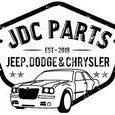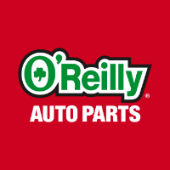-
Welcome to Auto Parts Forum
Whether you are a veteran automotive parts guru or just someone looking for some quick auto parts advice, register today and start a new topic in our forum. Registration is free and you can even sign up with social network platforms such as Facebook, X, and LinkedIn.
Selling Jeep KL Cherokee 2 litre Turbo Diesel Engine With Warranty EBT 6/2014 - 2018
-
Similar Content
-
Selling Jeep Timing Kit (3.7L) Part Number 5019423AD Suits Jeep, Dodge & Ram
By JDC Parts,
- jeepparts
- jeepengine
- (and 1 more)
- 0 replies
- 950 views
-
Jeep Engines |JEEP WK GRAND CHEROKEE 3.0 TURBO DIESEL ENGINE 11/2010 – 05/2013 Series 1
By JDC Parts,
- jeepengine
- jeepengineforsale
- (and 1 more)
- 0 replies
- 1,607 views
-
Jeep Cylinder Head Part Number 53010334 Suit Wrangler / Cherokee / Grand Cherokee TJ XJ WJ | Engine Parts|
By JDC Parts,
- jeepparts
- jeepengine
- (and 1 more)
- 0 replies
- 870 views
-
RT Off-Road Bumper (Heavy Duty Front) Part Number RT20046 Suit Gladiator / Wrangler JT JL
By JDC Parts,
- jeepparts
- jeep front bumper
- (and 1 more)
- 0 replies
- 944 views
-
-
Similar Topics
-
By Counterman
On modern vehicles, overheating is a rare occurrence thanks to high-quality hoses, thermostats and better engine management. Unfortunately, the weak point is still the coolant. Whether it’s a 100,000-mile or 150,000-mile coolant, eventually it will break down and lose the ability to protect the components with which it comes into contact.
Coolant at 100,000 miles may look the same as coolant with zero miles, as the real difference between good and bad coolant can’t be seen with the naked eye; it is in the chemistry and based on mileage.
Coolant contains additives called buffers that keep it at a neutral pH but these buffers are meant to last forever. When these chemicals become depleted, the pH can’t be controlled. It rises dramatically in a short period of time the moment the buffers are fully depleted. This is why replacing the coolant at the recommended interval is critical.
Coolant has two specifications that can be used to justify replacement — the condition of the additive package and the freezing point.
The additive package is the secret sauce for a coolant. Its main function is to control corrosion. Other components of the additive help with heat transfer and cavitation reduction. Some additive packages use seal conditioners to extend the life of the gaskets and plastic carriers.
The freezing point is measured by the overall specific gravity of the coolant, which has a direct relationship to the coolant/water mixture. This test can help spot coolant that has been compromised by the owner topping off with water. This measurement works well on systems that do not have pressurized reservoirs.
The strength or freezing point of coolant can be measured with a simple hydrometer. This device uses a calibrated float or plastic balls (not as accurate) to show the specific gravity of the coolant. This, in turn, shows how much freezing/boiling protection the coolant offers. You must remember to compensate for temperature because the specific gravity (density) of the coolant is lower when the coolant is hot.
The more professional tool for this purpose is an optical refractometer because it is very accurate and automatically compensates for temperature. Be aware: these are not simple, inexpensive tools. A refractometer can cost up to $300 or more because of the precision optics in its lens. Ethylene glycol (EG) and polyethylene glycol (PG) antifreeze have slightly different densities, so you have to use a hydrometer or refractometer with the appropriate scale (or one with a dual scale) for accurate test results.
Color-coded chemical test strips that are dipped into the coolant can be used to quickly and easily reveal the condition of the coolant. These strips of coated capillary paper react to the presence of certain dissolved minerals in the coolant and change color to give a good, marginal or bad indication of the coolant’s pH condition. Some test strips also show the concentration of antifreeze in the coolant.
The added benefit of test strips is that the results can be shared with the owner by attaching the used strip to the inspection form.
But, mileage is the gold standard for any coolant replacement recommendation. Engineers and chemists spend a lot of time formulating the coolant to match the engine and interval.
If you are performing a water pump, heater core or hose repair, recommend a full coolant flush. Just topping off the coolant can lead to a mixed bag when measuring the pH and freezing point. Also, check the specific gravity before a repair. Many customers know how to top off their coolant with water that could dilute the coolant concentration.
Selling any fluid maintenance service is difficult these days. But, if you document and educate customers on the importance of coolant, it becomes more than just an “add on” service.
The post
link hidden, please login to view appeared first on link hidden, please login to view.
link hidden, please login to view 
-
By Counterman
Ask anyone what a “complete” brake job is and you’re likely to get a variety of answers. In the context of professional automotive repair, I define complete as meaning correctly done.
Why? Because the actual work that needs done to any given vehicle can vary depending on vehicle mileage, age and condition. And it can vary based on the equipment. For example, do you have access to a brake lathe? As a counter professional, you’ll have to dig into the details with your customer to determine what they need. However, there are simple guidelines to follow that will ensure you’re advising a “complete” brake job every time.
Brake Fluid, Brake Fluid, Brake Fluid
Above all, clean brake fluid is my first requirement.
It’s probably one of the most overlooked vehicle services, and most people don’t think of it as part of a brake job. It’s an afterthought only considered if they’re forced to do it. Anytime I perform brake work, the first part of the inspection is the bleeder screws. They must be able to open. No brake job is complete without flushing the brake fluid.
There’s no need to get “crazy” with it either when it’s done on a regular basis. A couple small 12-ounce bottles are plenty. Use a clean suction-bulb to remove as much brake fluid as you can from the master-cylinder reservoir, refill it, then flush fluid through until you can fit the contents of both bottles into the reservoir. Start with five strokes at each wheel until you see how much fluid is being forced through, so you equally balance the flushing from front to rear.
Contaminated brake fluid is corrosive and damaging to all the internal brake-system components, and it can cause poor braking performance. Even though every manufacturer specifies to flush it on a regular basis, it’s still out-of-sight, out-of-mind for a lot of people. In my opinion, you can’t change the brake fluid too often.
A complete brake job not only includes fluid, but also calipers or wheel cylinders in any situation where the bleeders don’t open.
Pads and Rotors
When disc brakes are being serviced, pads and rotors are at the core of the job. It’s far less common to resurface rotors than it has been in past times, and it doesn’t matter if you take that road or go with new. But the bottom line is something must happen with the rotors. “Slapping” a set of pads on old rotors is an immediate fail. The pads will never bed in properly, and you’ll only be faced with poor brake performance, uneven pad wear and unwanted noise.
The bottom line: Rotors must be resurfaced or replaced for the job to be complete. By the same token, old pads on new rotors equals an incomplete brake job.
Why would someone do this? Your guess could be as good as mine, but believe me, I’ve seen it all and I’m sure you have too. New pads and rotors bed in together. In other words, they rely on each other for proper brake operation.
Drum Brakes
If you thought there were some offenders with disc brakes, drums are often worse. For some reason there seems to be a perception that brake drums miraculously never need service, but the same theories hold true. If you’re replacing brake shoes, the job is only correctly done by resurfacing or replacing the drums.
Hardware
Hardware is anything from springs and hold-downs on drum brakes to anti-rattle clips and slide-pin boots on disc brakes. All these little pieces are important to proper brake operation. On drum brakes, even though everything may be intact, it’s also old and the springs will simply be fatigued. On disc brakes, the same holds true and even anti-rattle clips that look OK can be worn or fatigued in some manner. Luckily, most pads come with the hardware. They don’t put it in the box just for fun.
One of the most overlooked parts of disc-brake service is the fact that the pads must be able to move freely in the caliper bracket and the calipers also must be able to move freely back and forth. Most calipers (excluding fixed calipers) feature slide pins that allow this to happen. No brake job is complete without removing the slide pins, cleaning them up, lubricating them and reinstalling them with new boots when required.
It’s surprising how often the slide pins are stuck and how often brake pads are jammed in place due to rust, and the rust must be completely removed to allow free movement of the new brake pads. Stuck pins or stuck pads cause uneven and accelerated wear, dragging brakes, pulling and excessive heat buildup.
Lubrication
I touched on it already, but it’s worth a second mention. In addition to the slide pins on calipers, the brake pads require lubrication any place they contact the caliper bracket or caliper. Brake lube is specifically formulated to a) not damage or swell rubber components such as piston or slide-pin boots, b) prevent vibrations that cause noise, c) lubricate the pad contact points so they move freely in the caliper bracket and d) resist washing out.
In the case of drum brakes, the backing plates feature specific contact points for the brake shoes, which should be cleaned and lubricated. Brake shoes also require lubrication at pivot and contact points between the shoes and hardware.
Inspection
Determining what is required for a complete brake job can only be done through inspection and disassembly. It’s easy to see worn-out pads and rusty rotors through a wheel, but even when that’s evident, you can’t see anything else until you take things apart. This is when you inspect for brake-fluid leaks, seized or damaged hardware, torn dust boots and functional bleeder screws.
If leaks are found or dust boots are torn on a caliper piston or wheel cylinder, or if the bleeder won’t open, the components need to be replaced. Only until disassembly is performed during an inspection can you say absolutely what’s needed for any given vehicle. Sure, we can all look at a 50,000-mile four-year-old vehicle and say that it needs pads and rotors, and most likely those are the only hard parts it will need. But it’s no guarantee, and the higher the mileage and older the vehicle, the more likely we’ll find something else, which leads to the next category …
Recommending Parts
There’s always a way to work into the conversation of a complete brake job. The next time someone comes in and wants pads and rotors, you might ask, “Would you like me to look up caliper availability just in case a bleeder screw doesn’t open, or a caliper pin is seized?” If they’re an experienced technician, they know how often that happens, and they’ll likely say yes, just to know in case they need them, and they’ll appreciate it!
If they’re new at all this, it will get them thinking and open the door for your advice. The next thing you know, they might change their mind and decide to buy new calipers – or at minimum they’ll leave with the extra goodies they need for a complete brake job, such as brake lubricant, brake fluid, brake cleaner and some shop rags. If they get into the job and realize there’s a problem, they’ll be right back at your store.
The post
link hidden, please login to view appeared first on link hidden, please login to view.
link hidden, please login to view





Recommended Posts
Join the conversation
You can post now and register later. If you have an account, sign in now to post with your account.
Note: Your post will require moderator approval before it will be visible.